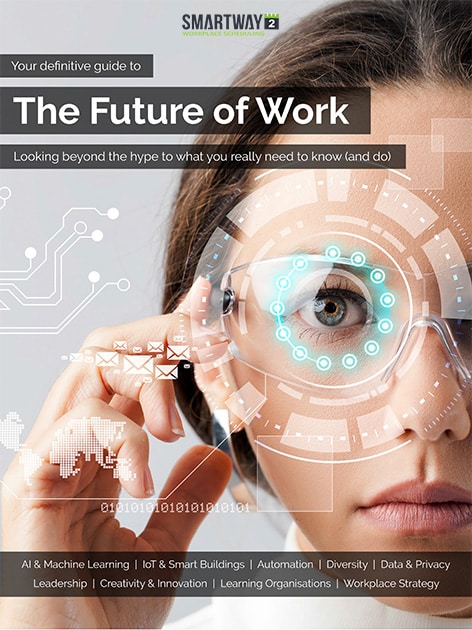
Your definitive guide to the Future of Work
This post is an excerpt from our FREE ebook, ‘Your Definitive Guide to the Future of Work – Looking Beyond the Hype to What You Really Need to Know (and Do)’.
Introducing… The Future of Work
There’s no escaping the dizzying swirl of jargon and rhetoric around ‘the future of work’.
No matter which industry or job you’re in, distinguishing between the smoke, mirrors and important stuff is hard. Really hard.
So the first question is this: why bother?
Whether you’re in HR, facilities, customer service, IT, sales, marketing… is it truly vital that you become a student of the future of work?
Do you really need a strategy in place for managing a blended workforce of humans and machines?
The answer is both yes, and no.
Buzz around tech trends like AI, machine learning, blockchain, virtual reality, augmented reality and the internet of things has permeated every sector. That’s before we even get started on the augmented workforce, the kinetic enterprise, the open talent economy and countless other terms that describe some kind of tectonic shift in the way we work.
The bad news?
Deciphering the wood from the trees isn’t going to get any easier.
Clarity and focus remain elusive when there are always new tools, more information, more opinions and more jargon.
To confuse us even further, new concepts and tools intersect and converge over time. This leads to perpetual attempts at defining and re- defining new buzzwords. A lucrative pass-time for consultants, perhaps, but a draining hamster-wheel for anyone under pressure to deliver tangible results day in, day out.
Today’s ‘future of work’ hype gives rise to all sorts of questions:
“What do these terms actually mean?” Or more specifically, “How come I think I ‘get it’, then find myself revisiting definitions and explanations over and over, in a perpetual loop of confusion?”
“Should I be scared of these changes, or excited by them? How will they affect me, my job, my team, my company, my industry?”
And when you’ve just about got your head round the theory, reality looms. “How do I know what to implement and where to begin?” And the pressing, stress-inducing, “How on earth will I find time for anything new when my day-job is barely doable as it is?”
It’s little wonder we’re so fascinated by the future of work. If we can just catch a glimpse in the crystal ball – see a clear vision of this workplace of the future – we’ll feel less anxious and better prepared. We’ll regain a sense of control.
One thing is for certain: to be prepared for the future, you have to understand it.
This guide to the future of work is an attempt at cutting through the noise. The hope is that reading it will provide you with a framework for making better decisions about what to focus on and what to do.
Why we need to rethink the way we work
Massive inflexible beasts: lessons from the steam factory floor…
In the early 1880s, Edison built the world’s first power station for generating electricity.
These power stations were a big deal for manufacturing, promising game-changing benefits.
Soon early adopters began to replace their factories’ steam engines with electric motors. They assumed, quite reasonably, that a massive surge in productivity would follow. But it didn’t pan out that way.
Twenty years went by and 95% of factories were still using steam. Many factory owners had considered going electric, but the savings and productivity gains were surprisingly disappointing.
These steam-powered factories were huge, inflexible beasts.
Even if only one piece of equipment was needed, the factory’s coal fires had to be lit and the single massive steam engine powered up.
The steam engine turned a central drive shaft that ran the whole length of the factory, setting a complex bunch of cogs and belts in motion. The layout of these workplaces was designed around this unwieldy, often dangerous, piece of kit.
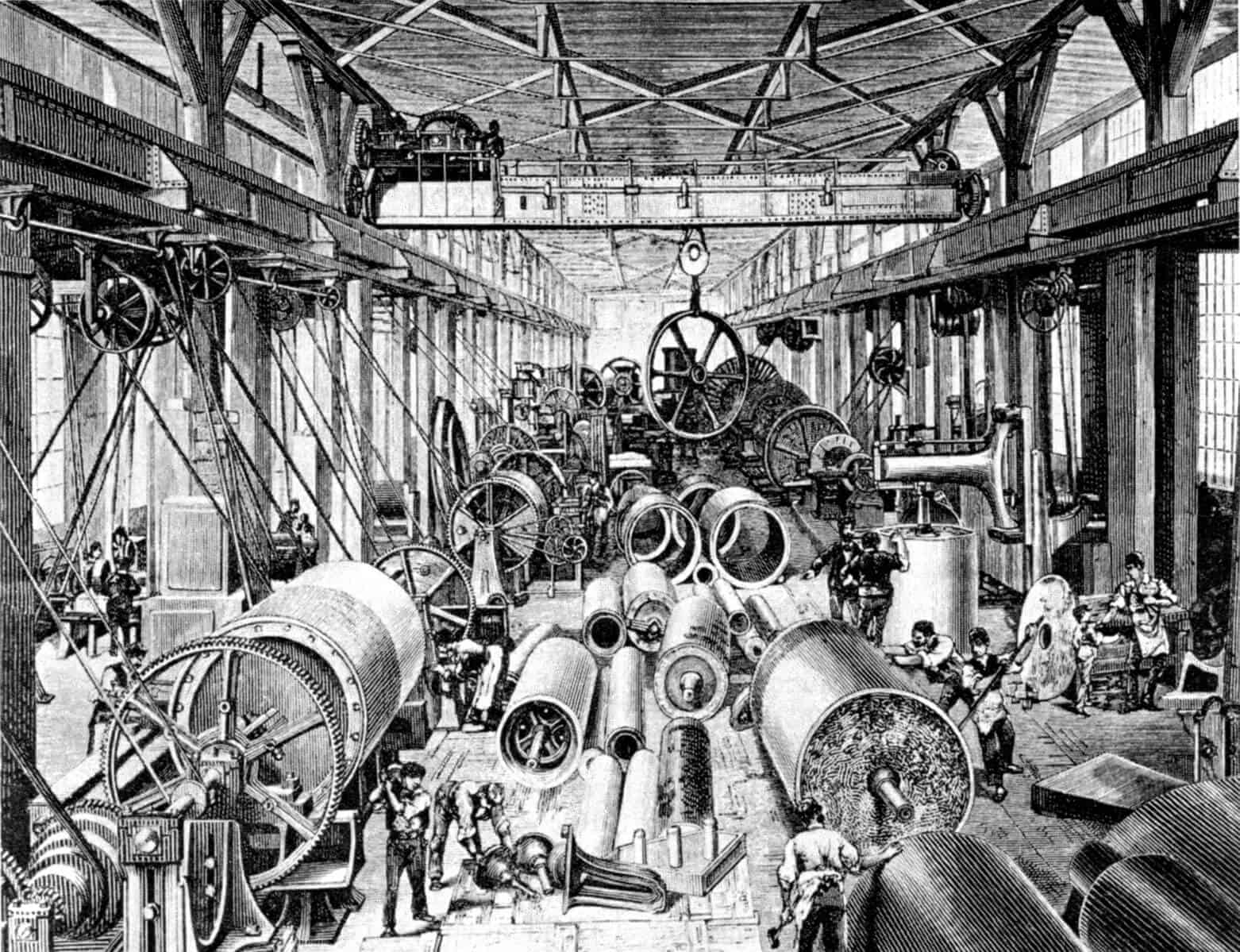
In the end it took 30 years for productivity to increase – arguably long enough for a generation of managers to retire.
The problem was this: managers replaced the steam engines with electric motors, but they failed to redesign the factories to take full advantage of electricity and its flexibility.
Instead of working around a big steam engine and drive shaft, electricity could deliver power wherever it was needed. Small, efficient electric motors could power each individual tool and workstation. People could work more autonomously, at their own pace and spread out in a cleaner, safer environment.
The scale of this change was daunting. It took a radical leap to realise the extent of electricity’s promise. Workplaces had to be redesigned. Processes had to be scrapped and re-thought. The way companies recruited, trained, paid and interacted with their employees had to shift gears.
Ultimately, it fell to the next generation to invent new ways of working.
We, however, can’t leave it to the next generation. It’s unlikely that any of us can live out the rest of our careers without taking radical leaps of this magnitude. In fact radical leaps and continuous change are the new business as usual. Just as those guys had to redesign their factories, we need to rethink the way we work.
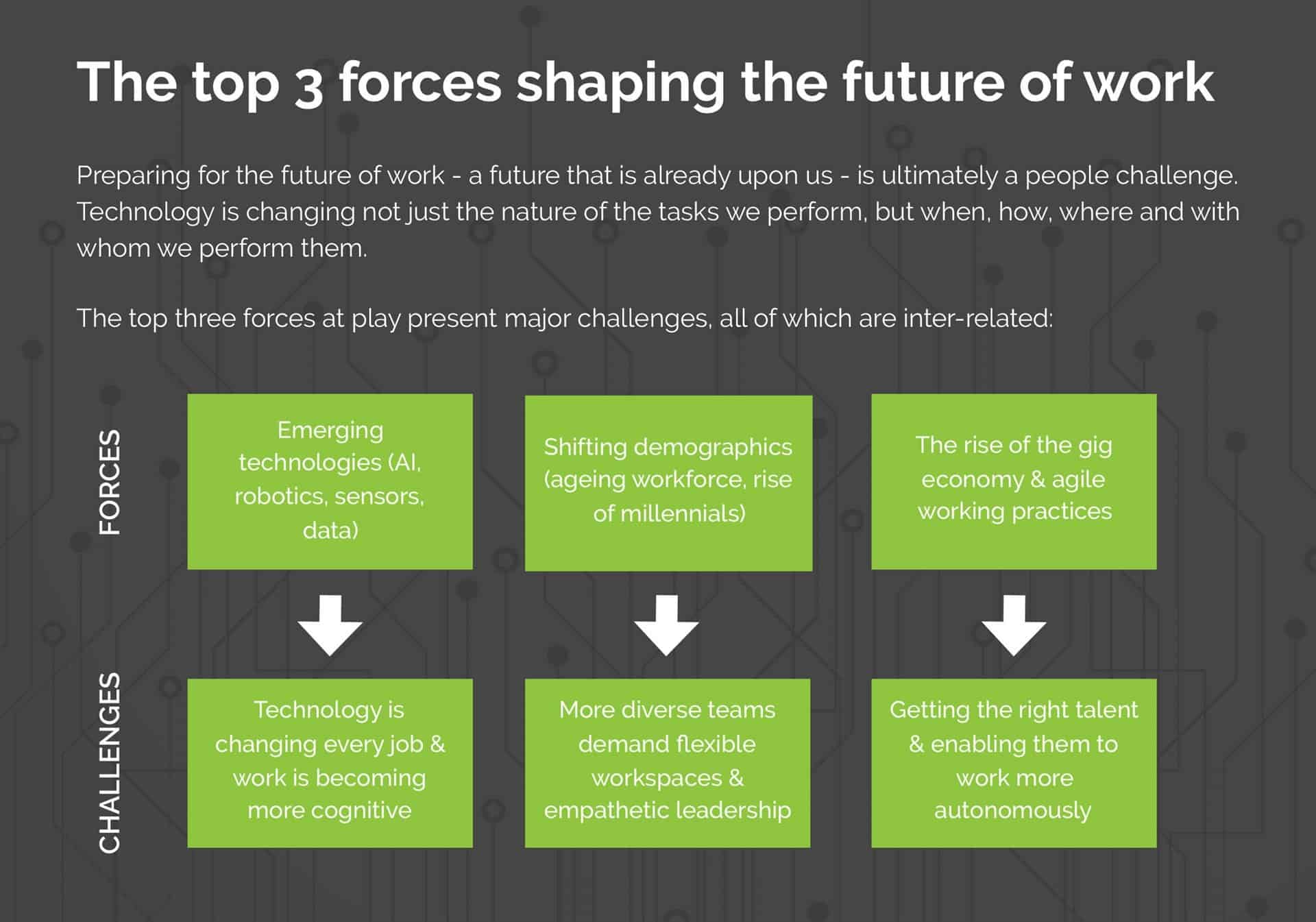
The impact of emerging technologies
How stuff will get done: the rise of automation
As technology becomes more intelligent and capable, it inevitably takes time-consuming tasks off our hands.
Although advances in technology create more jobs than they destroy, we can be sure that in time, every job will undergo significant change.
Broadly speaking, there are two levels of automation at play:
- Assisted intelligence – machines help us perform a task, e.g. GPS helps us navigate to our destination when we’re driving our car.
- Autonomous intelligence – machines take a task entirely off our hands, e.g. driverless cars
In every organisation today, some of the stuff that needs to be done gets done by humans; and some gets done by machines.
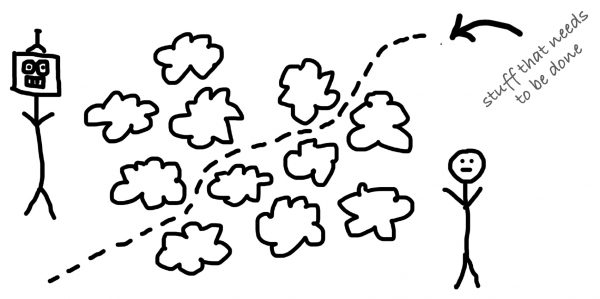
There are two major reasons why we’re freaking out about the future of work:
- The amount of stuff that needs to be done is always increasing
- The stuff that needs to be done is always changing and getting trickier
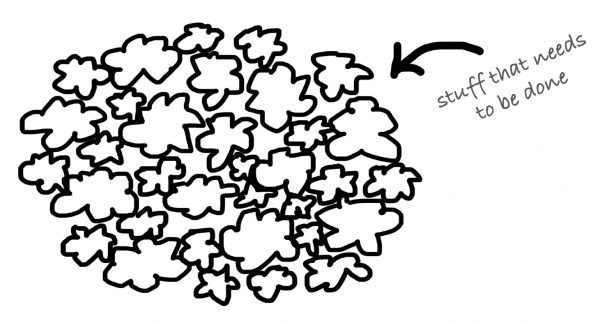
We have to keep getting more tricky stuff done because our expectations – as consumers, citizens and workers – keep rising.
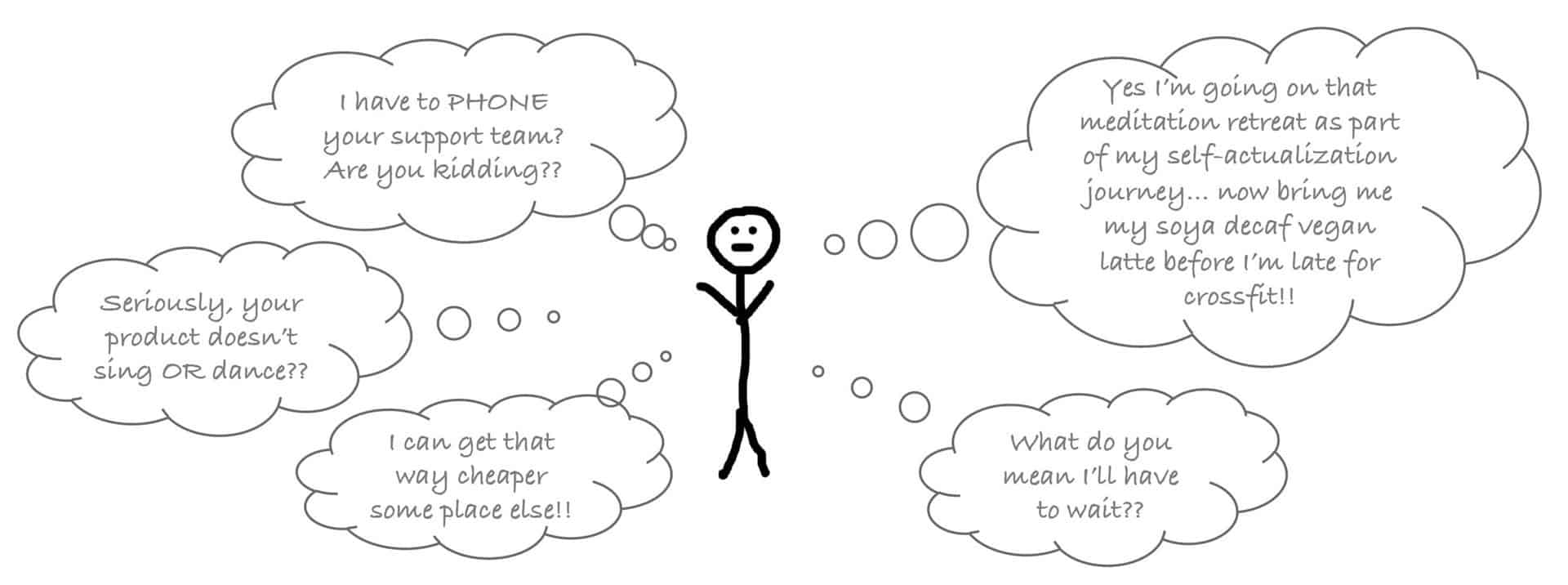
New knowledge and technology keep on giving us new capabilities. And we want it all. Like, yesterday.
Luckily, as machines get smarter, they can do more stuff to help us out.
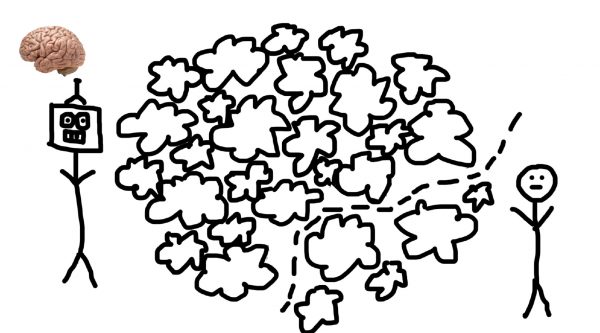
So at some point we may be able to put our feet up and watch cat videos all day on YouTube, supported by Universal Basic Income.

Or maybe not.
As technology takes repetitive tasks off our hands, we’re freed up to do more of the stuff that humans are way better at than machines. Including work that we didn’t even know needed to be done.
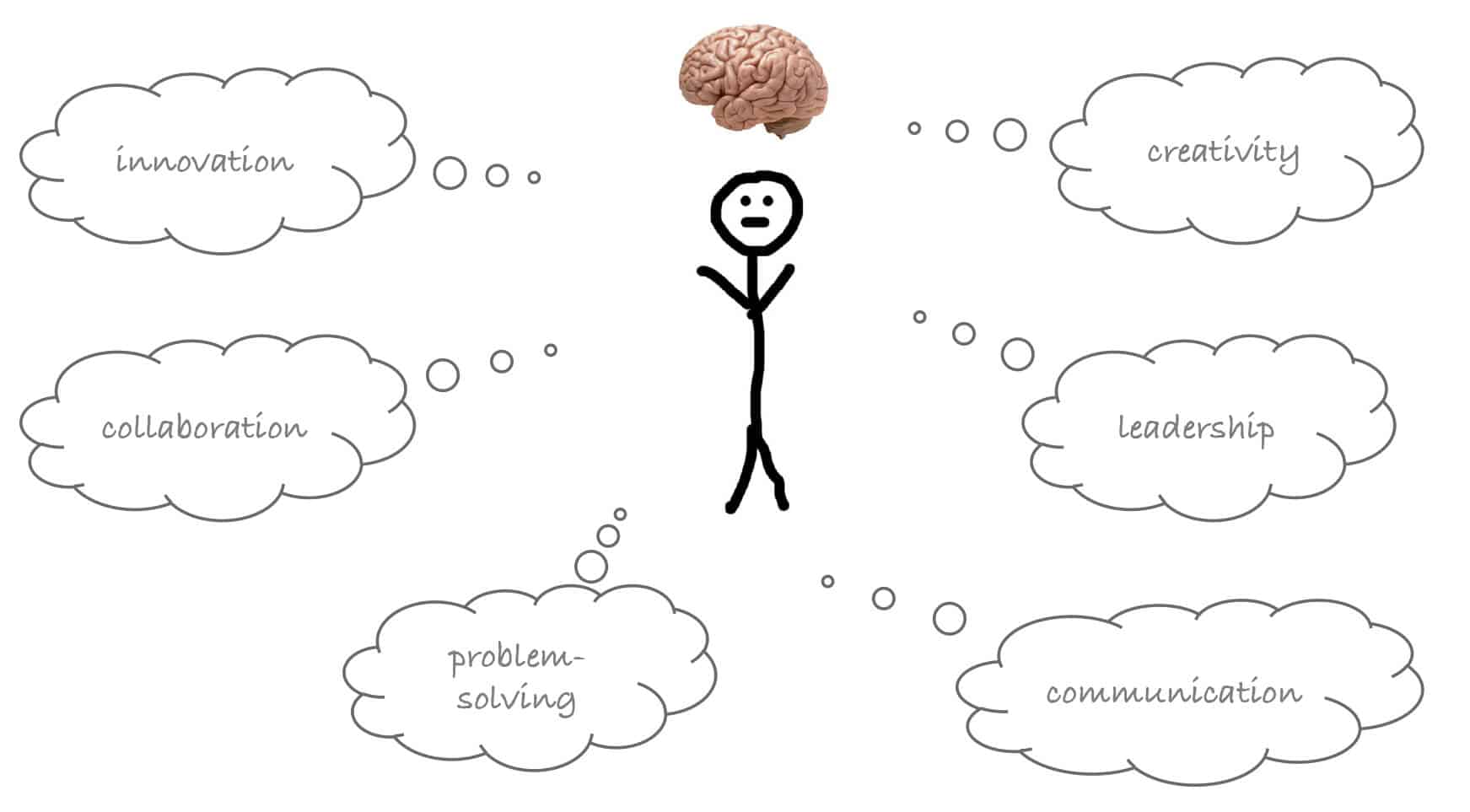
As machines keep getting smarter, they’ll keep taking on more of the tasks that they excel at.
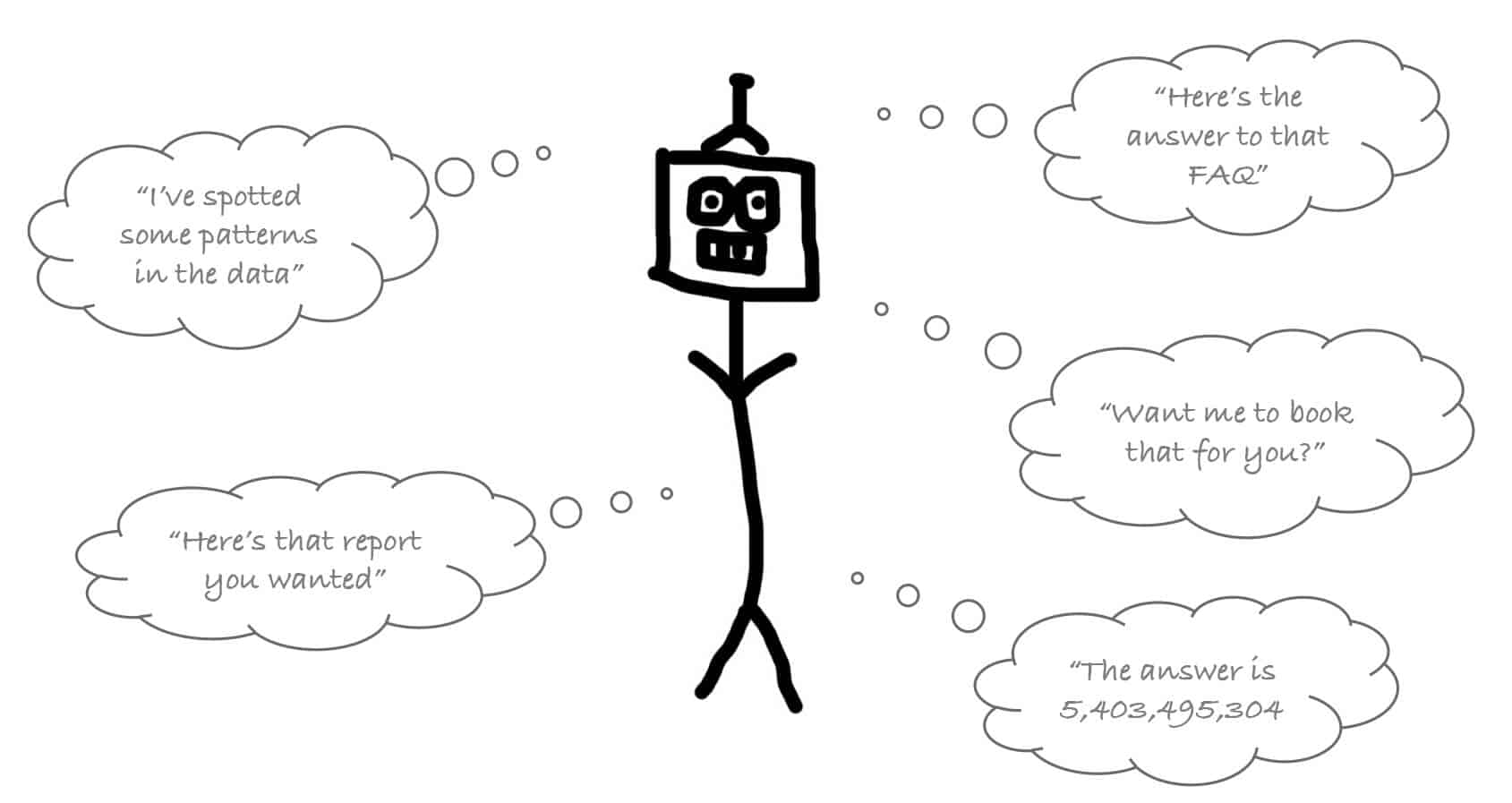
So we humans have to keep getting smarter too, seeing as we’re left with all that tricky, cognitive, creative stuff.
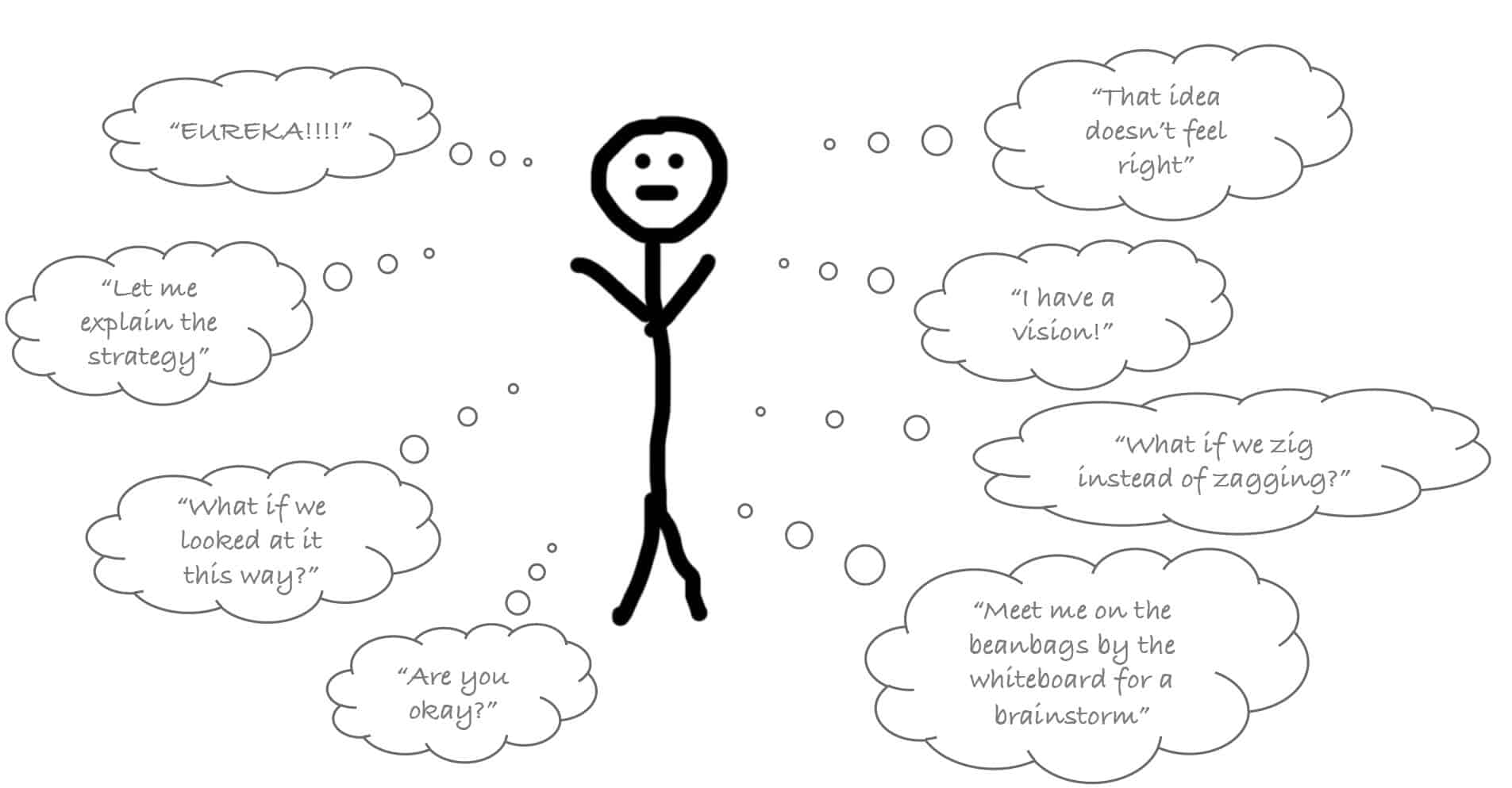
That’s why it’s essential that we create learning organisations. Every individual, team and company needs to focus not only on bringing in technical talent to make these changes happen; but also on on nurturing our uniquely human skillsets.
Whether you’re technical or not, in order to prepare for jobs that don’t exist yet, that’ll solve problems that haven’t even happened yet, we must commit to lifelong learning.

In a world where it’s impossible to protect jobs, continuous up-skilling can protect people.
Over time, our bundle of skills and capabilities will become more important than a defined role or profession; and the perceived value of human skills – like emotional intelligence, storytelling aptitude, creativity, critical thinking and empathy – will rise.
“The illiterate of the 21st century will not be those who cannot read and write, but those who cannot learn, unlearn and relearn” – Alvin Toffler
So perhaps by now you’re thinking…
“That’s all very well, but will the robots take my job?
Or, if you’re more dramatically inclined…
“Will the machines be our minions in the future of work, or will we be theirs?”
Okay, so that isn’t really beyond the hype, but these are important questions to explore. First, let’s get some clarity about what all this machine ‘intelligence’ really means…
Artificial intelligence & the future of work
What does AI really mean?
Rather a lot, it turns out.
If there’s one inescapable trend sweeping through the world of work today, it’s Artificial Intelligence (AI).
But with everything and its dog claiming to be ‘AI-powered’ these days, what does it really mean?
The term ‘AI’ is so all-encompassing and its applications so broad that it’s really not very helpful. Then there’s the sci-fi connotations and fear of human destruction – but we’ll come back to that (spoiler alert: such fears, while a pesky distraction from current reality, may not be entirely unfounded).
AI, at its core, is all about making computers imitate intelligent behaviour. When you think about it that way, nearly every piece of software could stake a claim to AI, but we recognise intelligent behaviour when it imitates human capabilities like reasoning, perception, problem-solving and learning.
As early as 1960, IBM’s Shoebox could recognise 16 words when spoken through a microphone and do simple mathematical calculations in response. But we’ve only recently reached the point where we have enough computing power and data to do more useful things.
AI is already an invisible force in all our lives. If you use Google Maps, or Google Translate, you’re already using AI. In fact we’ve all been reading news stories on Yahoo! Finance and buying books based on Amazon recommendations and Googling our symptoms for years… not really thinking about all that artificial intelligence under the hood.
When all technology has ‘intelligence’ embedded within it – and we’re getting there – we’ll no longer think about whether this or that is ‘AI powered’ – it’ll just be the way things work.
“As soon as it works, no one calls it AI any more” – John McCarthy, 1956
And machine learning…?
The difference between AI, Machine Learning & Deep Learning…
Terms like ‘machine learning’ and ‘deep learning’ are often used interchangeably with AI, but machine learning is actually sub-set of AI. It refers to algorithms we use to mimic human intelligence and make predictions.
Think of it like this: machine learning is the current cutting-edge approach to AI. Likewise, deep learning is a sub-set of machine learning, i.e. the current cutting-edge approach to machine learning. A more recent innovation is GANs – generative adversarial networks – a subset of deep learning.
But let’s not tie ourselves in knots with nomenclature. For most of us, the technicalities are far less relevant than what the technology enables.
One important point to understand is this: lots of clever humans and zillions of dollars are committed to advancing us through various levels of AI; and these levels have profound implications for our careers, our companies and life on planet earth.
So far we’ve barely scratched the surface of Level One and new capabilities are already transforming the way we work.
Make no mistake: AI will impact your organisation and your role within it, if it hasn’t already.
$15.2 billion of venture capital went to AI startups in 2017 [source: CB Insights]
The Three Levels of AI (from the fairly mundane to the totally insane)
Level One: Artificial Narrow Intelligence, known as ‘weak AI’…
Weak AI already exists everywhere and is normally quite mundane, specialising in one area. For example your car uses weak AI to judge when to apply anti-lock breaks; retailers and music apps use it to show you recommendations; your email client uses it to filter out spam; Facebook uses it to recommend which friends you should add or to choose what appears in your news feed; google search uses it to determine page rankings… then there’s fancier stuff like the AI that powers Siri on your phone, Nest thermostats, IBM Watson and driverless cars.
Level Two: Artificial General Intelligence, known as ‘strong AI’…
Strong AI doesn’t actually exist yet. It refers to a machine that’s as smart as a human across all areas, including problem-solving, learning and planning.
The human brain is the most complex thing we’ve ever encountered, so it could take a while for our scientists, engineers and tinkerers to crack this nut.
Some skeptics aren’t convinced it’ll ever happen, but most experts believe it’s inevitable that we’ll get there at some point.
Level Three: Artificial Super-Intelligence…
This refers to a machine that’s trillions of times smarter than a human in every way.
Of course this doesn’t exist yet either.
Yet the very idea fuels scary notions that robots will wipe us out or keep us as pets.
Experts who believe in strong AI are largely convinced that artificial super intelligence will follow.
Then again, there are plenty of skeptics (but fewer than you might think).
How far have we come? What AI can & can’t do today
Right now, AI can beat a chess grandmaster, but it can’t do all your housework.
AI has by now succeeded in doing essentially everything that requires ‘thinking’ but has failed to do most of what people and animals do ‘without thinking’. – Donal Knuth, professor emeritus at Stanford University CB Insights
In 2015 neurorobotics scientist Marc-Oliver Gewaltig and his team at the Human Brain Project created a simulated mouse brain in a virtual mouse body, taking the first steps towards building a ’virtual mouse’. This was part of a drive to map and model the human brain – a considerably more complex task, given we have 100 billion interconnected brain cells. New super-fast, super-accurate, energy efficient computers are being built to provide the juice we need to model the brain’s neural networks.
Despite all the progress made to date, strong AI still eludes us. If and when we get there, it’s likely to explode onto the scene more fiercely than we could ever imagine, because technology’s exponential growth lures us into a false sense of security, then engulfs us in a tsunami of change.
To clarify why, let’s take a brief diversion down the rabbit hole of exponentiality…

S Curves & Toasters: The Sneaky Nature of Change
Take a few seconds to work out how many years there are likely to be between now and your retirement.
Since our brains are wired to think linearly, we naturally assume that the amount of change that’ll happen in these years will be roughly the same as that which we’ve experienced so far. Regardless of how often we hear the mantra that ‘the pace of change is accelerating’, are we underestimating just how much newness we need to prepare for?
Ray Kurzweil’s law of accelerating returns describes how society keeps growing more advanced, causing change to accelerate… precisely because we’re more advanced. In other words, we create new tools and innovations that enable us to create new tools and innovations that enable us to create new tools and innovations…
And with each cycle of newness, we move higher up the chain of innovation.
Put another way, no single person knows how to make a toaster.
The person who assembled it in the factory didn’t know how to drill the oil well to make the plastic. Chances are neither you nor I know how to mine iron, build a furnace or any of the other processes involved in making a toaster from scratch.
If we were to attempt making a toaster from scratch, it might end up looking something like this…

Thomas Thwaites made this toaster in 2009, to demonstrate just how far we’ve come from self-sufficiency towards interdependence.
This very morning, you probably consumed goods and services from dozens of countries, created by a seething global network of people and organisations, all collaborating and inventing – creating the building blocks and tools that enable more people to make more stuff that saves more time so we can make more stuff and live better lives.
The more complex and interconnected this network grows – the more it learns and interacts and connects – the more our creativity is unleashed (e.g. you no longer need to be able to code to make a website, let alone grind wheat into flour to make bread). We keep on rising up and specialising, so as individuals we can focus on where we can add the most cognitive value.
This uprising happens in fits and starts, as paradigm shifts burst onto the scene and change the game. AI is one such game-changing technology.
The trouble is, the pattern of change (see ‘The shape of change’ below) causes us to overestimate how much things will change in the short term, when we’re at the foot of the curve; and underestimate how much things will change in the long term (the steep up-and-to-the-right part of the curve).
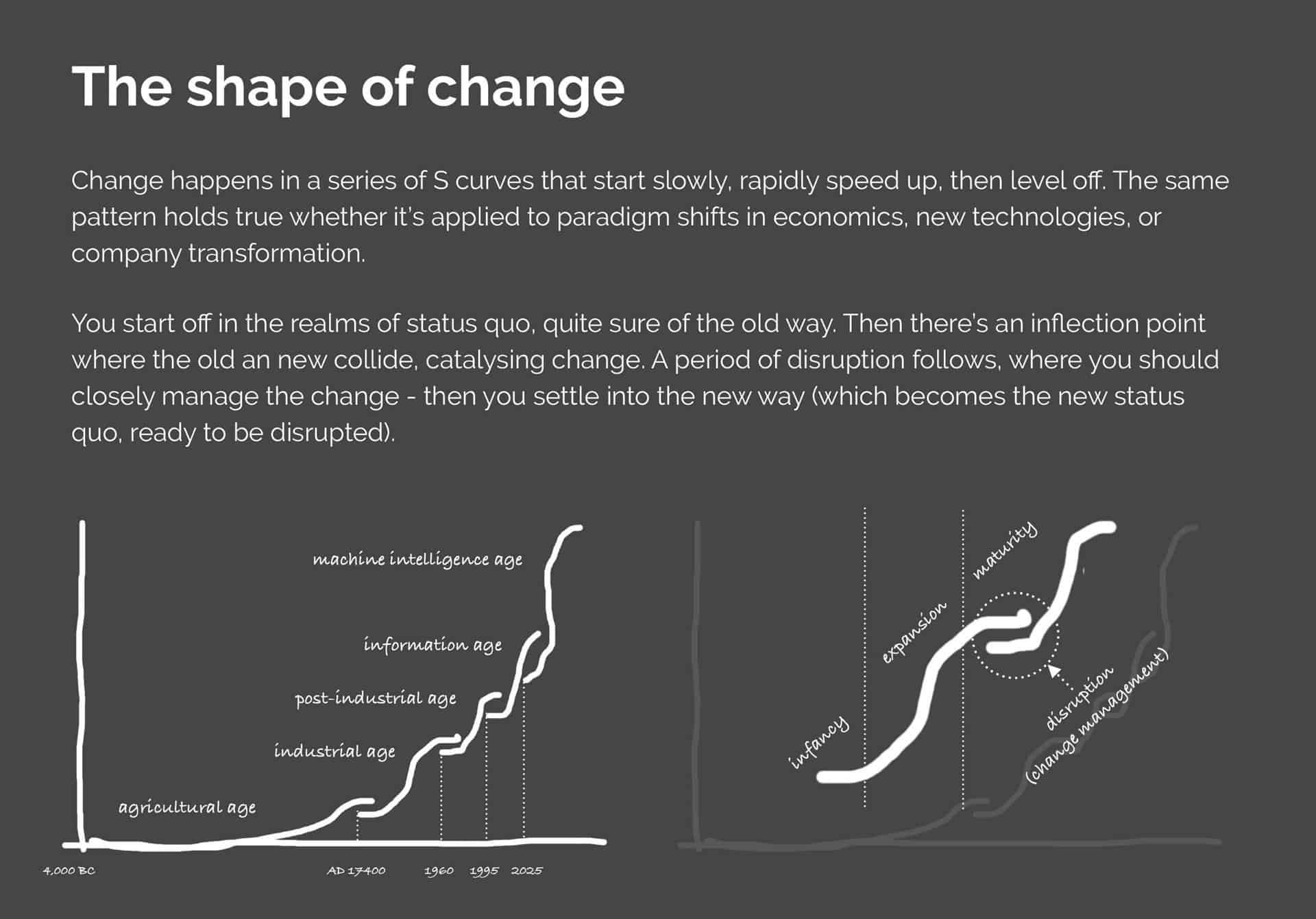
To illustrate the severity of this underestimation…
Imagine you’re Marty in Back to the Future. Your kid self goes back in time to when your parents were kids. You’d be a little shocked by what you saw, but not too shocked. Now imagine if your kid went back in time to when you were a kid – before mobile phones and the internet – the shock would be somewhat more severe.
If in future your grandkid could go back to when your kid was a kid, the shock would be mind-blowing. And so it goes on, as the cycles of change compress and quicken with each year that goes by.
That’s why all progress throughout the entire 20th century would have been achieved in just 20 years at the rate of advancement in year 2000. Another 20th century’s worth of progress happened between 2000 and 2014. And another will happen between 2014 and 2021. In another 20 years, according to Ray, a 20th century worth of progress will happen several times a year; then later in less than a month.
Likewise if you zoom back 30 or 50 thousand years, something drastic was happening to we homosapiens. Our brains had increased in size and our way of thinking changed. Culture started to develop rapidly and we began to revolutionise our toolkit: slim, sharp blades, spears, needles. We got a bit arty too, making ornaments out of shell, ivory and stone.
The pace of change and innovation was lightening fast. It kept on coming: fish hooks, domesticated wolves, wheat crops, money.
There was more innovation between twenty and eighty thousand years ago than there had been in the previous million years.
And so the futurist’s mantras go: ‘never before have culture, communications and technology moved faster than they are today’ – statements the like of which will always be true when they are spoken.
If Ray Kurzweil, lots of scientists and logical reasoning based on historical patterns are all correct, we could all be in for a major shock by 2030. The same level of shock someone from the 16th century might experience if we transported them into this room right now.
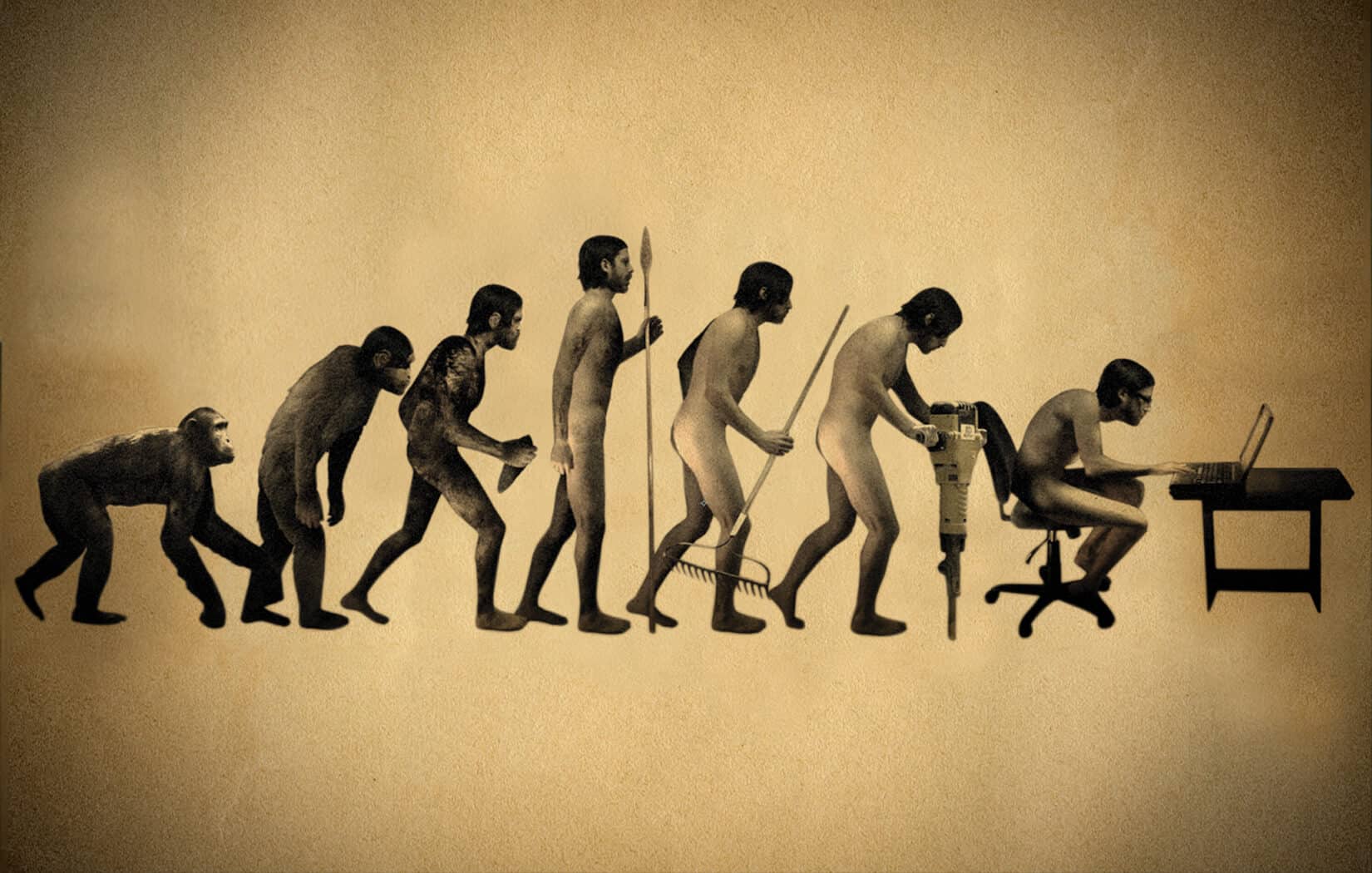
If you don’t believe it, just remember that you’re probably judging the next 20 years of progress based on the previous 20 years you’ve just lived through. This is a natural mistake. It’s natural for us to think linearly, while change is exponential. It’s natural for us to imagine the future based on past experience – your personal notion of ‘how things work’ – despite past experience being a very poor way to judge the future.
It isn’t just linear thinking that’s leading us into a false sense of slow – it’s the basic math.
We underestimate how drastically work will change over the course of our careers because exponential progress is a sneaky beast. At first, when advances in a particular area like Artificial Intelligence start doubling, the change remains very small for a long time. For example if you double every year from 0.00001 to 0.00002, it’s no big deal. If you double 0.00002, you get 0.00004… and so on. As small amounts increase exponentially, change isn’t too noticeable.
But as tech capabilities grow, progress reaches a tipping point and suddenly we find the curve shooting upwards really steeply: 1, 2, 4, 8, 16, 32, 64, 128…
In fact if you take 30 steps linearly (1, 2, 3, 4, 5…), you reach 30.
If you take 30 steps exponentially (2, 4, 8, 16), you reach 1 billion.
The guy who supposedly invented chess understood the implications of exponentiality.
The story goes that the emperor was so impressed by the game of chess, he said, “I’ll give you any reward you can name”.
The young man replied, “Could you put one grain of rice on the first square of the chessboard. Then put double this amount – so two grains – on the next square. Double this again and put four grains on the square after that; and so on, until all 64 square are filled.”
He asked for all the grains of rice on the chessboard, with each amount doubled on every square, to be added up; and that would be his reward.
“Easy done,” thought the emperor, and granted his request.
The Emperor’s servants marched off to start adding up the grains of rice, but they returned, distraught, a couple of days later.
They’d discovered that the amount of rice the young man had asked for exceeded all the grains of rice in the world – over 1,000 times the amount of rice we produce today.
Exponential functions like this happen around us every day, in economics with compound interest, loans and inflation; in population growth of rabbits; even in the spread of mould on a slice of old bread.
So if Ray Kurzweil’s Law of Accelerating Returns is right enough – if technological advances keep on doubling – imagine how our toolkit is likely to change during the remainder of our careers…?
Every time we use a new tool to get a job done, it changes the way we do that job. New materials change the way we build houses. New appliances change the way we cook and clean. Sometimes tools make the job easier, or take it off our plate entirely so it’s no longer a thing for us.
Ultimately, we must all make a choice, consciously or otherwise:
- Go with the flow and hope that our companies, teams and careers will survive accelerating change
- Study the future of work and proactively set a vision for our companies, teams and individual careers that will ensure we benefit from accelerating change
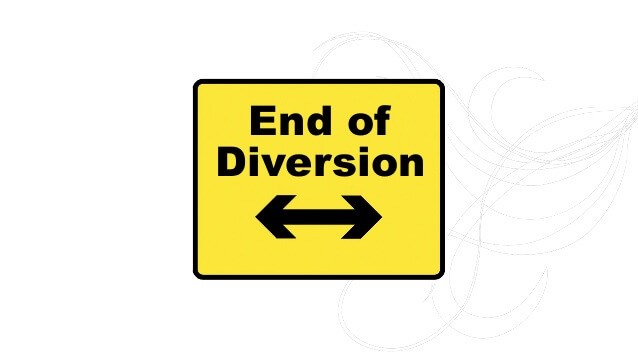
Back to AI… so what happens if we crack strong AI?
One thing is for sure: computers outperform humans in lots of ways. For instance our brains are limited in speed, storage capacity and durability, whereas computers don’t have these problems of the flesh.
Computers will also be better than humans at advancing collective intelligence. Our collective intelligence underwent major advances when we created language, writing, the printing press and the internet. These paradigm shifts enabled humans to sync up our thoughts and actions in pursuit of shared goals… like making a toaster, or running a country. Computers will be way better than us at this kind of syncing.
For those reasons and many more, things are going to get pretty wild if and when we reach the dizzying heights of Strong AI, because computers will be so good at self-improvement. So good that we could find ourselves in the realms of superintelligence before we know it.
We humans are used to assuming change takes months and years, but computers don’t have such constraints. Computers’ intelligence and capabilities could drastically change in minutes and seconds, bringing about an explosion in intelligence.
This is when things get tricky for us to imagine. After all, we have very limited brains. A machine that’s a billion or trillion times smarter than a human could potentially do things we consider godlike and magical, like controlling the position of every atom. And we have no idea whether this AI God is going to be nice.
Superintelligence isn’t just about machines thinking faster than humans. Yes, machines will be able to think faster, so they can solve a problem in seconds that would take humans years. But that’s not really the point. You could speed up your cat’s thinking and it still wouldn’t be able to understand the concept of marriage, or play Guitar Hero. Those things are beyond the comprehension of a cat. In the same way, we as humans aren’t able to comprehend the sort of thinking that strong AI is capable of, nor the outcomes of this quality of thought.
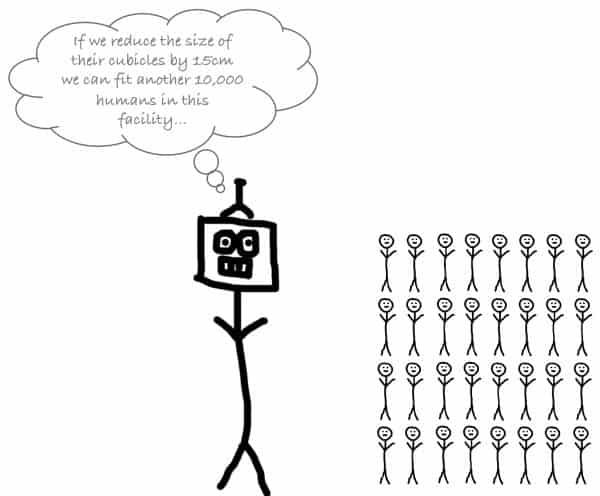
So despite our tendency to anthropomorphise machines, superintelligence will not mean a super version of human intelligence. A superintelligent cat won’t think like a human. Rather we program machines to have a particular motivation, so that’s what their motivation will be.
Not to mention the fact that the gap between your thinking abilities and that of your cat – or any known lifeform – is minuscule, in comparison to your thinking abilities vs that of a superintelligent machine.
Yet it’s interesting to imagine how things might pan out on planet earth and beyond if your cat was granted superintelligence, vs how things might pan out if your washing machine was granted superintelligence.
The takeaway is this: it’s humanly impossible for us to understand the consequences of superintelligent machines, should we ever give birth to them.
Many scientists believe the human race will either become extinct, or immortal, if we reach these levels of advancement.
Experts who believe that superintelligence will happen disagree on when it’ll happen. Some say we’ll crack strong AI around 2040, then super intelligence by 2060… but who knows.
Now let’s get back to today and the less mind-blowing reality we’re facing right now…
Electricity, fire & AI: how is AI being used today?
“AI will have a more profound impact than electricity or fire” – Sundar Pichai, CEO, Google
Sundar’s bold claim speaks to the epic future possibilities promised by AI. Yet despite the hype, current reality is somewhat more mundane.
Gautum Shroff from Tata Consultancy Services in India says, “Some may have been misled by glowing media reports, believing AI to be a magic wand that can be installed as easily as a piece of Microsoft software.’
Cue disappointment.
Those involved in implementing AI solutions have come to realise that substantial investment is required in data preparation, intensive monitoring of algorithms and a bucketload of customisation, in order to build anything useful.
So what kind of AI solutions are in use today?
- Bloomberg uses AI to automatically generate news articles by scanning companies’ earnings releases
- Vodafone uses AI to predict problems with its network and users’ devices before they arise
- Leroy Merlin uses algorithms to stock shelves more effectively, using past sales data and other info like weather forecasts
- Amazon uses AI to guide robots in warehouses and optimise packing and delivery; detecting counterfeit goods
- Alibaba and Ant Financial are experimenting with facial recognition for approving transactions
- Johnson & Johnson and Accenture use AI to sort through job applications and pick the best candidates
- E-commerce companies like Amazon use AI to generate product recommendations
- Advertising platforms like Google AdWords, Facebook and LinkedIn use AI for targeting ads and forecasting demand.
- Self-driving cars use AI to recognise objects.
- Voice assistants like Alexa and Siri use AI to recognise speech and take action.
- Chinese insurance company Ping An uses AI to flag up when loan applications through their app require further checks. Potential customers answer questions via video and they monitor 50 facial expressions to gauge whether they’re lying or telling the truth.
- Casino and hotel group Caesars uses AI to guess how much customers are likely to spend, then offers personalised promotions to draw them in
- Cogito listens to customer service calls using AI, assigning an ‘empathy score’ and giving guidance to agents for building rapport
It’s clear AI is already impacting every sector. Rather than treating it as something special and space-age, we can begin to think of it as another practical tool at our disposal.
However, like many cool new tools, the idea of it is really exciting, but when you come to play with it in real life, it’s easy to get a bit stuck.
If you’re of a certain age, you may recall sitting down at the first Apple computer, ready to change the world, only to find yourself at a loss a few minutes later. What should you actually do with it? Likewise when Google first appeared and you were faced with that blank input field. What the heck should you search for? Then there are the nerds (me included) who bought a 3D printer early on, only to find themselves surrounded by small plastic cubes, cross-bows and perhaps a miniature day-glo vase shortly after. None of which put a proverbial ding in the universe.
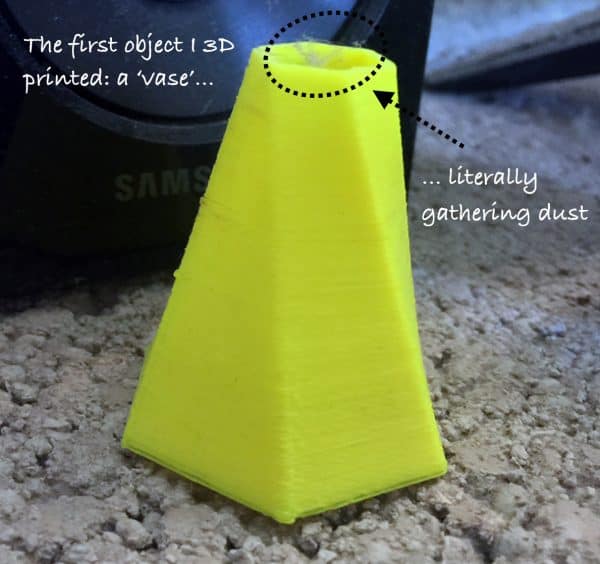
We’re facing a similar trough of disillusionment where AI is concerned.
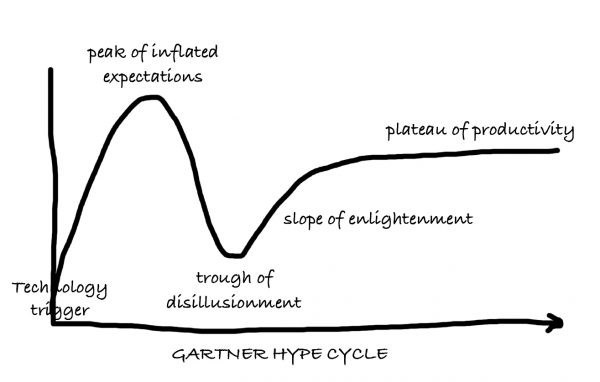
So when we sit down at the drawing board, what can we actually do with AI?
Gurdeep Singh from Microsoft describes AI systems as ‘idiot savants’. They can easily do jobs that humans find mind-boggling, like detecting tiny flaws in manufactured goods or quickly categorising millions of photos of faces, but have trouble with things that people find easy, like basic reasoning.
So it turns out the use cases aren’t exactly ‘wow’ on the scale of sci-fi cool, but potentially ‘wow’ on the scale of time-saving practicality. For instance your email client is probably using AI to show you which emails are most important, filtering out the spam. Not exactly mind-blowing, but let’s face it, many of today’s time-sucking tasks are dull.
But if AI can relieve us of all the mundane, repetitive activities in our lives and jobs, we’re freed up to enter a new era of productivity. Our time can be better spent on honing our uniquely human skillsets, like EQ, creative problem-solving, curiosity and flexibility. Not so dull after all.
Let’s look at the possibilities in more detail…
To continue reading, download our FREE ebook: ‘Your Definitive Guide to the Future of Work – Looking Beyond the Hype to What You Really Need to Know (and Do)’.
Inside we’ll explore… well… rather a lot!
- Powers of prediction: AI & augmented analytics
- Performance vs privacy: AI, data & your vision of an ideal future
- The rise of chatbots & voice assistants
- Will the robots take your job?
- Developing your AI / automation strategy
- Future in-demand skills
- EQ, collaboration & creativity
- Where Gen X, Millennials & Boomers converge
- Diversity & innovation
- Creating a learning organisation
- Tips for developing a high performance culture
- Growth vs fixed thinking
- The open talent economy
- The rise of agile working
- Hierarchies vs networks
- The future shape of teams
- Design thinking
- IoT & smart buildings
- HR, Facilities & UX design
- How to design your workplace strategy
- Growth-hacking change
If you love content like this and share our passion for creating awesome workplaces, subscribe to our blog.
Do you work in HR or Facilities? You might like this free report: Top 10 Workplace Trends Impacting HR & Facilities.
Download eBook: The Future of Work
Your definitive guide to the future of work. Looking beyond the hype to what you really need to know (and do). Topics include machine learning, smart buildings, automation and more!
